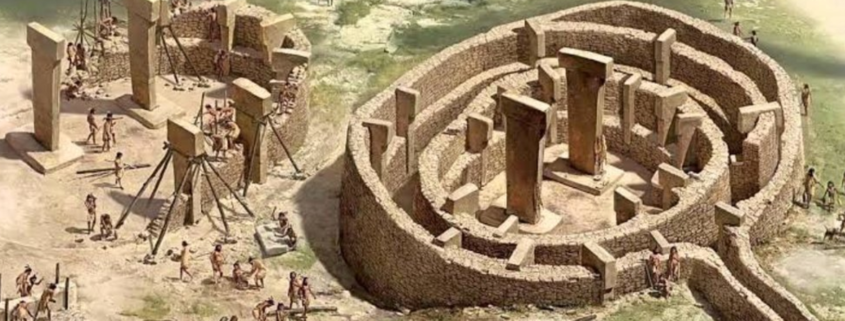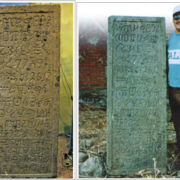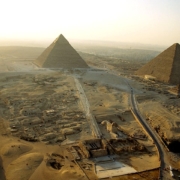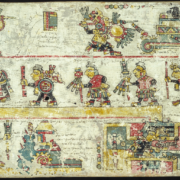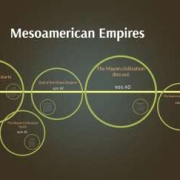The REAL Age of Göbekli Tepe (NOT 9500 BC!)
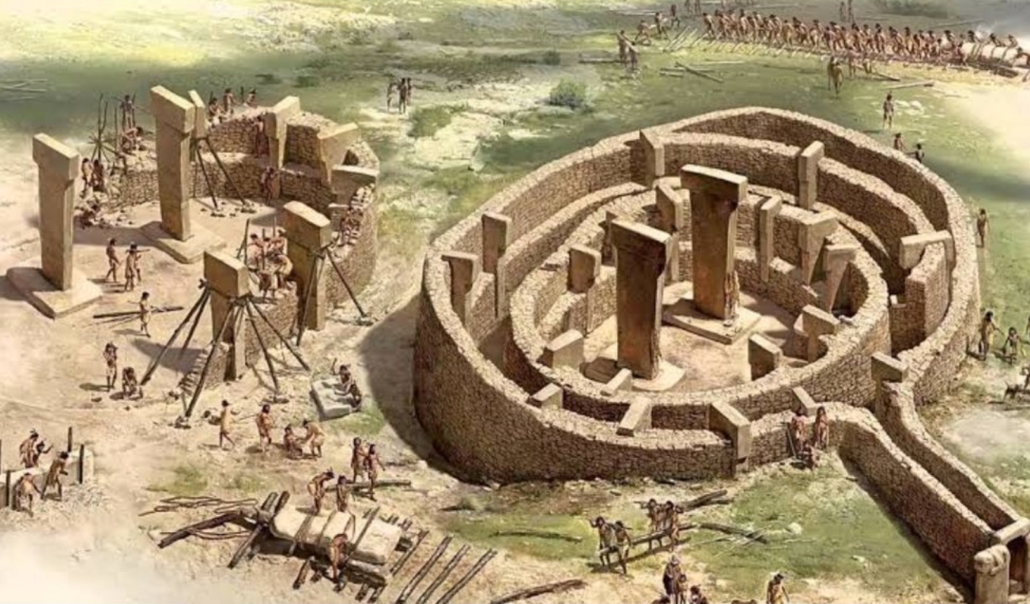
Göbekli Tepe (known as Girê Mirazan or Xirabreşkê in Kurdish) is an archaeological site in the Southeastern Anatolia Region of Turkey ‘supposedly‘ dating to the Neolithic. German & Turkish archaeologists led by Klaus Schmidt have dated the site to the Pre-Pottery Neolithic between c. 9500 and 8000 BCE largely based on radiocarbon samples and the absence of pottery (see dating details).
However, several clues of the Göbekli Tepe archaeological site in Turkey make it certain that the site is NOWHERE NEAR as old as generally believed. And undoubtedly dates to the Bronze age instead of the Paleolithic.
In fact, it is incredibly common for sites in the near-east with known historic dates laying within the Hallstatt Radiocarbon Plateau of 550-750 BC to give anomalous radiocarbon determinations. And just as common for organic material buried in certain types of lime and pulverized limestone to give contaminated dates which are known to be too old. (see Manning, Vaknin, Ben-Yosef, etc. See also radiocarbon considerations, volcanics & the hard water effect)
Göbekli Tepe undoubtedly falls within one of these three groups, along with many of the Pre-Pottery Neolithic A (PPNA) sites in the region, mostly correlated to stylistic similarities to Jericho. The archaeological site of Jericho in Israel suffers from the same issue of likely volcanic or lime contamination (the site lays on a blocked drainage where ancient landslides blocking the drainage likely brought sub-surface waters saturated with lime into contact with dating material). Or possibly these sites were built during the same short period of spiked non-radiogenic bearing atmospheric carbon dioxide levels (possibly from a nearby volcanic field venting event from the massive Harrat Ash Shaam field in Syria or the nearby Karaca Dag volcanics.)
The first clue which makes the incorrect radiocarbon dates of Göbekli Tepe obvious is the column artwork. Particularly the bag motif in proximity to the avian vultures. This is a well known religious motif from both Neo-Assyrian (911-609 BC) artwork and the Urartu Kingdom (858-586 BC). The ‘bucket and cone‘ or bag and dobber used prolifically in Urartu art depicted the manual pollination of date palm trees with a synthetic stamen and was used to represent fertility and potency.
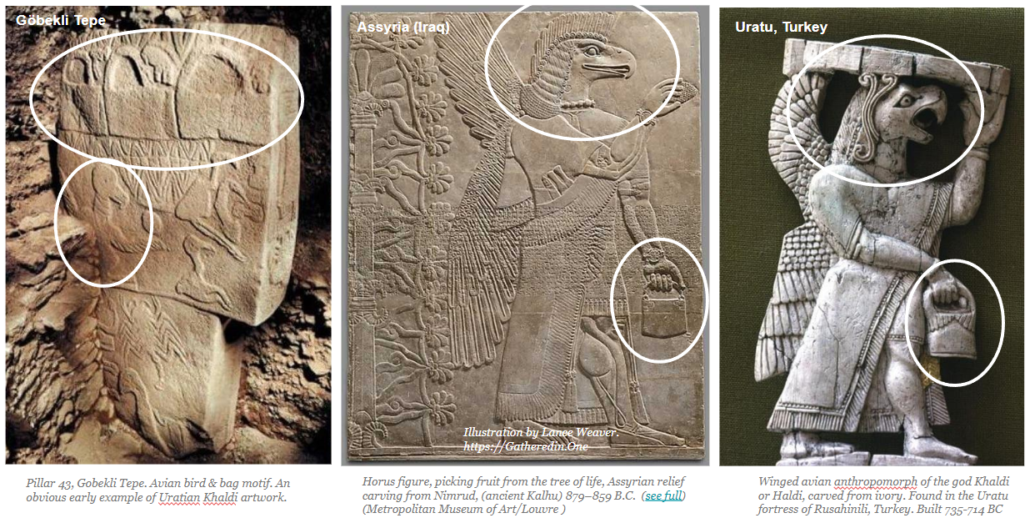
All three of the archaeological sites which house the religious artwork above are found within 250 miles of each other in the region of Assyria and ancient Urartu. Many similar motifs are found in numerous similar sites in the region. The more rudimentary style of the Göbekli Tepe artwork may suggest it was made earlier than the other examples, or it may just have just been carved by less talented artists and stone masons. But for these religious stylistic motifs to be 8000 years older is incredibly unlikely and borders on ridiculous. A better earliest range possibility would be 2670 BC, the last known major eruption of the Harrat Ash Shaam volcanic field (a likely source of non-radiogenic radiocarbon contamination). Another possible source is the Karaca Dağ Sheild Volcano and the active Mt Erciyes Volcano with known historic ash eruptions that stretched into Palestine.
Note that the radiometrically dated material of Gobekli Tepi (and I suspect the other pre-pottery sites in the region) all came from material mixed within pulverized backfill. This study shows a number of radiocarbon dated objects from charcoal to to wall plaster to collagen from a cow tooth. Thus we know that if the dates are anomalous it is not from material bias, but from some type of environmental factor which is affecting all the materials equally. In fact, neighboring site SeferTepe, in which 21 human skulls were found, were dated to 4000 BC, even though they were initially assumed to be Neolithic. I often suspect that instead of volcanic contamination that after the ice age, enormous swings in climate (perhaps corresponding to TPW) caused enormous variations in global radiocarbon levels. These evened out by about 600 BC, but I suspect they fall around the regions of 650 BC, 1400 BC, 2100 BC & 3000 BC. (Quite likely with the true date of ~4000 BC corresponding with the c14 date of the LGM). Because of historic dates, the last of these swings is fairly well studied and understood (see Halstatt Radiocarbon Plateau), but I suspect the prior three are still to be discovered, but explain the repeating histories I have noticed… (flesh this out, link to my other article)
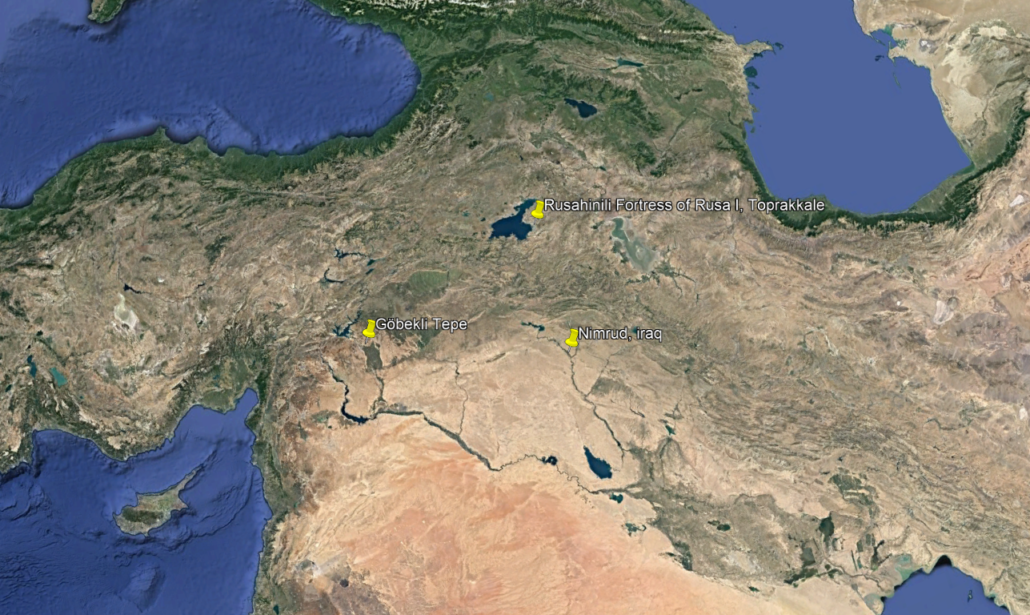
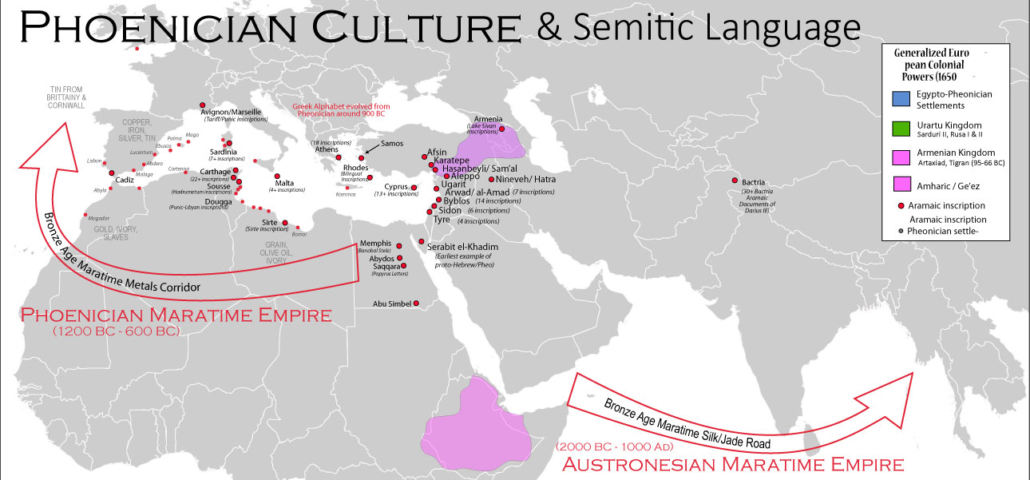
Yet another evidence for the correct late bronze to early iron age date for the site lies in its similarity to other Urartu & Phoenician sites in the region. One of the most striking examples is comparing the architecture with the Phoenician Taulas of Menorca, Balearic Island. The layout of Göbekli Tepe and Menorca sites like Torralba d’en Salord and Torre d’en Galmés are almost identical. Undoubtedly influencing each other in their T-topped columns the site dates from as early as 1310 BC to as late as 300 BC Punic occupation.
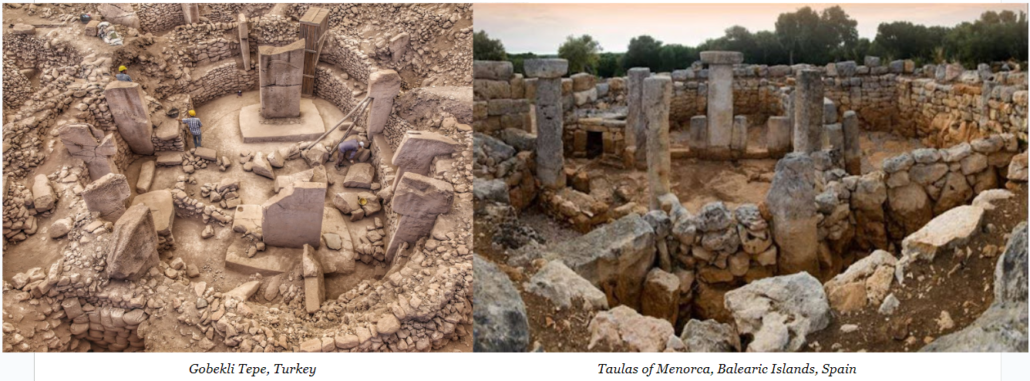

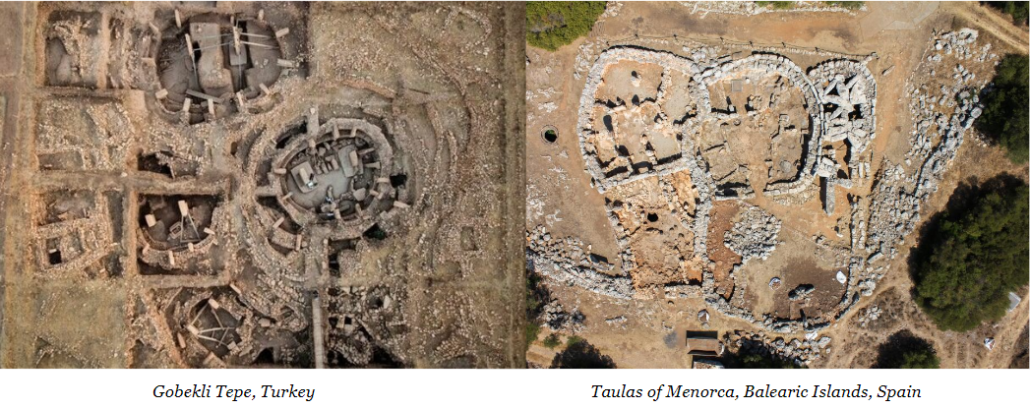
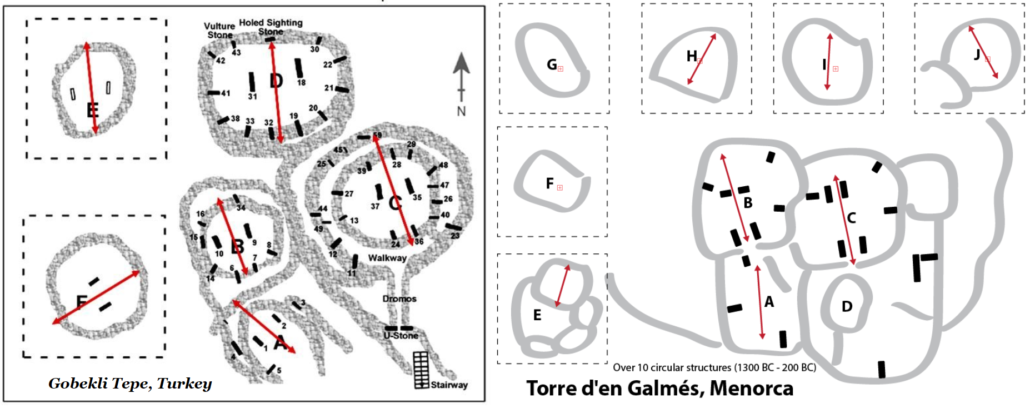
Because of their striking similarity, many might confuse the images above of the Temple or Taula on Spain’s Balearic Islands of Menorca with Göbekli Tepe. Both are built in sprawling circular layouts, often on hills with T-shaped center roof columns and equispaced outer wall columns. (somewhat like Stonehenge.) Even the smaller side wall rock work is quite similar in many respects. Perhaps the most striking similarity is the celestial alignments and multi-room, rounded shared wall features.
The various animals found on the columns of Göbekli Tepe are not some early example of paleolithic animistic religion but instead representations of well known Bronze & Iron age constellation zodiac signs. Note for instance the crab/scorpion of Göbekli Tepe in comparison to the well known Babylonian astrology kudurru depicting a turtle, which was a symbol of Enki; 1125BC-1100 BCE. (from British Museum)

Another example of this ridiculous reliance on limestone contaminated radiocarbon dates of basketry is the Qumran area Muraba’at Cave, where a “Pre-Pottery Neolithic A” woven reed basket was found amidst numerous other artifacts, including a new dead-sea scroll fragment ALL clearly dating from 200 BC to 135 AD. The reed basket radiocarbon dating by Prof. Elisabetta Boaretto of the Weizmann Institute of Science in Rehovot, the IAA, dated to 9,500 BC. Yet, a nearby skeleton (also obviously contaminated) radiocarbon dated to 4000 BC. While the caves artifacts mostly dated by coins, writing and other non-radiocarbon means all dated to around the turn of the Christian era. This kind of lack of recognition of date corruption is horrible science, but sadly has become a regional staple in the Pre-Pottery Neolithic dating sequence.


Pre-Pottery Neolithic A (PPNA) sites: Jericho, Hallan Cemi. Jerf el-Ahmar (9500 – 8700 BC) in present day Syria

